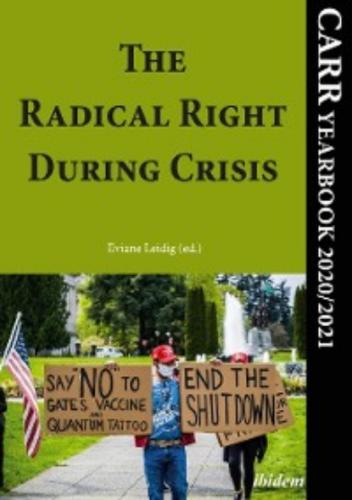The Radical Right During Crisis. Группа авторов
5%
It seems evident from EVS survey data that, at least in some cases, radical right voters tend to hold more anti-democratic views. Overall, radical right voters are 25% less likely to classify a democratic system as “very good”, vis-à-vis their non-radical right counterparts. Digging deeper, in many cases, the results point to radical right voters seemingly approving an authoritarian consolidation of power and ignoring checks and balances, while simultaneously maintaining support for free and fair elections. For example, while radical right voters were nearly as likely to maintain the essentiality of free and fair elections compared to other voters, they were much less likely to decry military coups and rule.
This variation in voter preferences mirrors rhetoric of radical right leaders themselves. Much of the radical right electoral rhetoric focuses on taking power away from the corrupt elite and rightfully returning it to the masses.10 Rarely do radical leaders openly advocate removing people from the decision-making process. Rather, they are more concerned with removing constraints to their ruling, once democratically elected. Take again, for example, President Recep Tayyip Erdoğan’s actions in Turkey. Considered as leading to a breakdown of liberal democracy, his constitutional changes dramatically increased the power of the executive and abolished the office of prime minister. Still, these changes did little to affect voting rights in Turkey (and were even enacted via a popular referendum).
Given the above, it appears that not only are radical right voters aware of their anti-democratic predispositions, but these predispositions seem to mirror the traits observed in party leader rhetoric. They are more likely to support the idea of eroding constraints on their rule, yet at the same time are no more willing to castigate the importance of free and fair elections. This may seem a subtle difference but is an important one. When radical right parties demonstrate values counter to democracy, their voters believe them to be a necessary process of which they will benefit.11 As such, they stand for policies that give the party they support more power, at the expense of democracy. When it comes to seizing their own power, however, in the form of fairly run elections, they seem to remain opposed.
Nicolas Bichay is a Doctoral Fellow at CARR and doctoral candidate in political science at Michigan State University.
1 Andrea Kendall-Taylor and Erica Frantz, “How Democracies Fall Apart,” Foreign Affairs, December 5, 2016, https://www.foreignaffairs.com/articles/2016-12-05/how-democracies-fall-apart.
2 Christian Houle and Paul D. Kenny, “The Political and Economic Consequences of Populist Rule in Latin America,” Government and Opposition 53, no. 2 (2016): 256-87.
3 Kareem Shaheen, “Turkish Journalists Accuse Erdoğan of Media Witch-hunt,” The Guardian, May 2, 2016, https://www.theguardian.com/world/2016/may/02/turkish-journalists-accuse-erdogan-of-media-witch-hunt.
4 “Although Parliamentary Elections in Hungary Offered Voters a Diverse Choice, Ruling Party Enjoyed Undue Advantage, Say International Observers,” Organization for Economic Cooperation and Development, April 7, 2014, https://www.oscepa.org/documents/election-observation/election-observation-statements/hungary/press-releases-12/2152-2014-parliamenary/file.
5 Jan-Werner Müller, What Is Populism? (Philadelphia: University of Pennsylvania Press, 2016).
6 David Adler, “Centrists Are the Most Hostile to Democracy, Not Extremists,” The New York Times, May 23, 2018, https://www.nytimes.com/interactive/2018/05/23/opinion/international-world/centrists-democracy.html?mtrref=t.co&gwh=9094043E46C8EA5E9225B9B7F3611AE3&gwt=regi&assetType=REGIWALL.
7 “Turkey Referendum Grants President Erdogan Sweeping New Powers,” BBC News, April 16, 2017, https://www.bbc.com/news/world-europe-39617700.
8 Evren Doganc, “Turkish Referendum,” Ipsos, April 20, 2017, https://www.ipsos.com/en/turkish-referendum.
9 Matthijs Rooduijn et al., “The PopuList: An Overview of Populist, Far Right, Far Left and Eurosceptic Parties in Europe,” 2019, https://popu-list.org.
10 Müller, What Is Populism?.
11 Müller, What Is Populism?.
Nationalism and Memory
Grieving Greater Hungary: Trianon, Orbán, and the Hungarian Radical Right
Katherine Kondor
In the Hungarian collective memory, few events evoke as much emotion as the Treaty of Trianon. Referring to the peace treaty signed at the Grand Trianon Palace at Versailles on 4 June 1920, this treaty meant that Hungary lost about two-thirds of its territories. The end of the First World War marked the end of the Austro-Hungarian empire, meaning the federalisation of both Austria and Hungary. With this came the Trianon peace treaty, where Hungary lost most of its national minorities: Slovaks, Romanians, Croats, and Serbs, among others. This treaty meant families were divided along national borders,1 and many ethnic Hungarians now found themselves members of other nation-states. Parts of Northern Hungary went to the Slovaks and Czechs, the South went to the Serbs, Croatians, and Slovenians, and Transylvania became part of Romania. 1941-42 briefly saw a reversal of the treaty and reinstatement of lands as, under the Hungarian regent Admiral Miklós Horthy, Hungary fought on the side of Nazi Germany.
In the 1930s, the extreme right began to centre around Ferenc Szálasi, leader of the newly formed Party for National Will; the party was characterised by militant anti-Semitism and irredentism, specifically seeking to reunite the Hungarian people of the Carpathian Basin under Hungarian leadership. Later, Szálasi’s ideas of “Hungarism” and the reversal of the Trianon treaty became central to the Hungarian radical right, most specifically to the new Hungarian National Socialist Party and later to the infamous Arrow Cross Party and Hungarist Movement. Their ideas were a mix of anti-Semitism and fascism, believing that powers such as Great Britain, France, the United States, and the Soviet Union should be dissolved, and Hungarians (along with Latin, German, Slavic, and Islamic nations) should become the leading world race.
These ideas of Hungarism and the reformation of “Greater Hungary” are now central to Hungary’s radical right. “Greater Hungary” is recognised in the form of an idea, with the concept symbolising the reunification of all ethnic Hungarians. It can also be represented physically by the image of present day Hungary set within the pre-Trianon borders of the country, which often appears as a form of pan-Hungarism on decals, jewellery, and clothing. In another incarnation, it appears as a common chant used by radical right groups—“Vesszen Trianon!” (“Down with Trianon!”).
Viktor Orbán and his government have also been often accused of revisionist approaches. Indeed, the Fidesz government instituted the opportunity for Hungarian citizenship2 to all Hungarians living outside of the nation-state’s borders; those ethnic Hungarians granted
